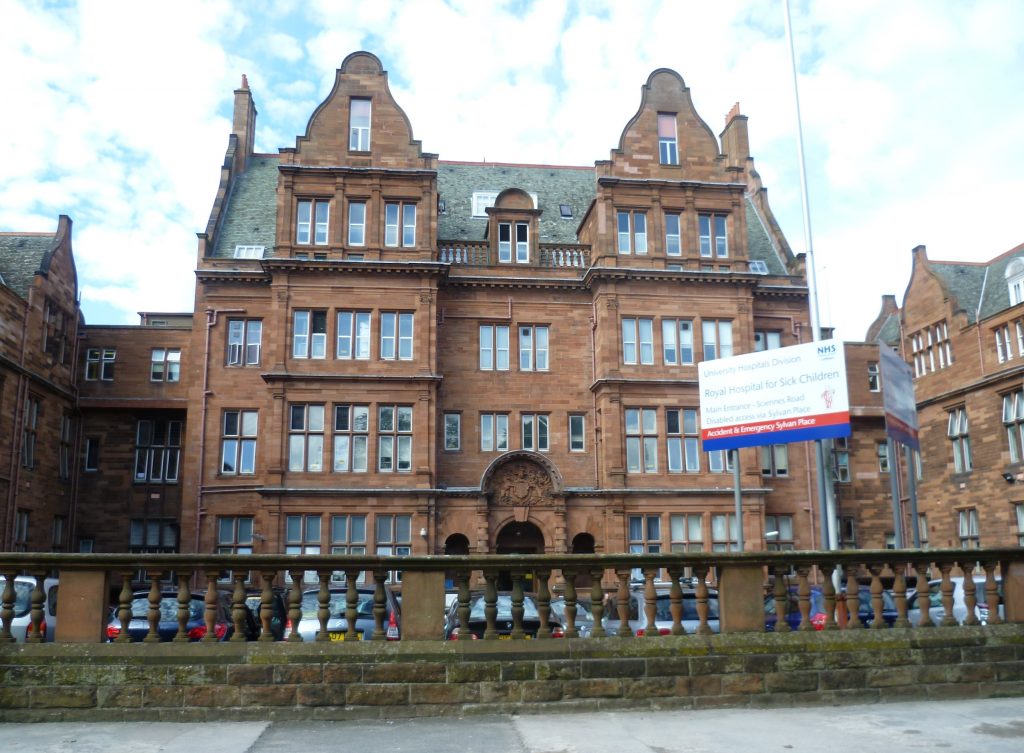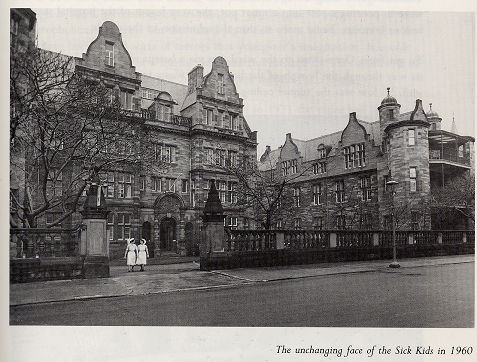9 Sciennes Rd, Edinburgh EH9 1LF

The Royal Hospital for Sick Children (RHSC), also known as ‘Sick Kids’ was established at this location on Sciennes Road in 1895. At that time, the life expectancy for children under 5 was particularly low. In response, Dr. John Smith campaigned for a designated children’s hospital to be run by volunteers and used to train new doctors. In 1863, the hospital was opened in Meadowside House and was the first in Scotland dedicated to the care of only children. Despite having a purpose-built fever room, an outbreak of typhoid in 1890 required the hospital’s patients and staff to be moved to a temporary location. After further inspection Meadowside House was deemed unsuited to house patients again and was closed. The current location, previously a maternity hospital designed by Scottish architect George Washington Browne, was then acquired. Dr Joseph Bell, who was Sir Arthur Conan Doyle’s inspiration for Sherlock Holmes, was the first appointed surgeon at the hospital in 1887 and remained there until his retirement.




